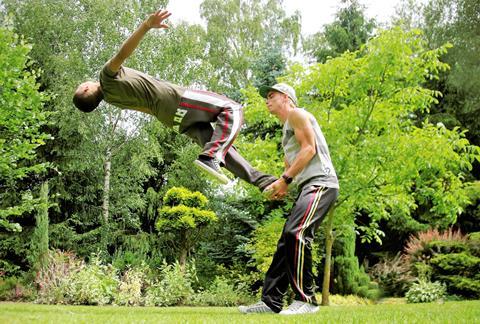Heard the term but not sure what it can look like in a chemistry classroom? Here’s how to make the most of your lesson time
What is flipped learning?
It’s the reverse of delivering content in lesson time, and leaving students to understand and apply it – which is often the tricky bit – unsupported as homework.
Rather than using lesson time to explain concepts, students become familiar with content material on their own, ahead of contact time with their teacher. Teachers then use contact time to help students apply concepts and address difficulties.

Why should I care about it?
The chemistry curriculum is packed. Flipping could get students through the content they need to learn quicker, leaving more time to support tricky concepts in lessons.
Flipping itself is a means to an end; an approach to free some time from delivering content in lessons. It’s what you then decide to do with the freed-up lesson time that’s important.
Is it one of those flash-in-the-pan fads?
Although often described as having burst onto the scene in recent years, flipped teaching is not a new thing. It’s more the catchy title that’s fresh. Imagine suggesting to a university humanities department that they stop reading books to students in lectures and instead get students to read in advance, then discuss them in lecture time. They’d laugh and say, ‘that’s what we already do: that’s called a seminar.’
Flipped learning’s prominence grew rapidly in schools more recently due to developments in technology that made the approach more usable. The rise of MOOCs had much to do with it.
Do I need expensive technology to flip my lessons?
Not necessarily. Preparation work could be as simple as asking students to get to grips with a textbook chapter before a lesson. Though you need to check the material has been understood, not simply copied out.
A benefit of technology for flipping is that it lets teachers monitor learners’ progress with preparation work. Additionally, some students are easier to engage using technology than paper – they find it more fun. But schools need to be mindful not all students have an internet connection at home, even if they are provided devices.
What kind of student does it benefit?
Anecdotally, teachers find the approach handy for very mixed-ability classes. Traditional delivery of content risks boring students who already get it while losing struggling pupils. Learners can go over flipped preparation material as many times as they need to feel comfortable with it while contact time can be used for things like peer instruction, allowing more advanced students to help others. Recent research also suggests the benefits of flipped learning are slightly greater for disadvantaged pupils.
What can a flipped chemistry lesson look like?
Secondary school teacher Rob Campbell describes his latest flipped lesson: ‘This week, my year-13s have preparation questions on nucleophilic addition mechanisms they have to answer. I use a video software programme called edpuzzle.com. In that, I can embed questions that I get feedback automatically from. The lesson is a Tuesday. I set that for Sunday so I have time to access their answers, mark their answers and then prepare next steps.
‘They’ve not done nucleophilic addition mechanisms before. But because they have met organic mechanisms before, it’s just a new application of something they’ve already done. I want to know how well they can apply what they’ve done previously to a new unfamiliar situation and then give them feedback on what the missing bits are in the lesson.
‘So, my lesson will basically be a student feedback session. I know before the lesson what their strengths and weaknesses are. They get a lot of individual tailored feedback, but my time is not taken up in planning the lesson.’
Is it hard to get the students to do preparation work?
‘If they find others are getting loads of support in lessons and they’re getting none, it quickly becomes an incentive to do it,’ says Rob. But he admits you need a level of buy-in from students to be independent.
Should everyone flip all their lessons?
‘I would argue against that. It’s one tool in the toolbox, not a universal screwdriver,’ says Rob.
‘I used to teach organic mechanisms as “learn this, learn that, you don’t need to understand it” and I found the kids couldn’t do those questions when it came to exams. So I tried flipping. However, if you’re very good teaching organic mechanisms the way you do it, why flip? Look at what your students struggle with and if you find you can teach it better, try the flipping approach for that.’
Want to find out more? Here are four suggestions
- Check your approach – the Flipped Learning Network have composed an official definition of flipped learning, as well as Four Pillars of Flip complete with a checklist to check you are flipping effectively [pdf].
- Delve into the literature – a thorough and open-access review of the flip literature [pdf] by Michael Seery gives a great overview of research into the area. You might prefer the lighter overview of that review in Education in Chemistry first, or this other accessible discussion of inverted classrooms.
- Tackle the technology – Rob Campbell explains how Zaption can be used to create videos as flipped material in this article.
- Weigh up the costs and benefits – tes.com shares exclusive results from research into the impact of flipped learning in UK schools that suggests flipping technology for maths led to about one month’s extra progress. It was slightly more beneficial for disadvantaged students. The debate around whether that amount of progress is worth the cost of the technology continues in their insight article [£].
Ready to read more about flipped learning in chemistry teaching?
- Try this summary article of a research project on flipped learning, complete with teaching tips.
- Discover how two post-16 teachers use the approach to boost learners’ grasp of the fundamentals.
- Use these resources and videos to introduce your learners to experiments before they do them themselves: for 14–16 years and 16–18 years.
Acknowledgement
This article is based on discussions with Simon Lancaster, professor at the University of East Anglia.














No comments yet